AGA cooker factory
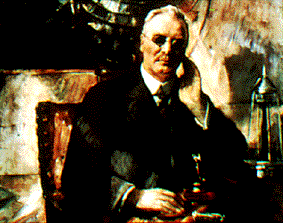
It was in 1922 that blind Nobel Prize-winning physicist Dr Gustaf Dalén invented the world’s first heat-storage cooker.
Confined to his home after a failed experiment cost him his sight, Dalén was inspired to create a better, more efficient cooker for his wife, Elma, who constantly had to tend to their old-fashioned range.
Dalén created a cast-iron cooker capable of every kind of cooking simultaneously, through its two large hotplates and two ovens. The now famous AGA was born and by 1929 manufacturing was under way at the AGA Heat Ltd factory in Smethwick.
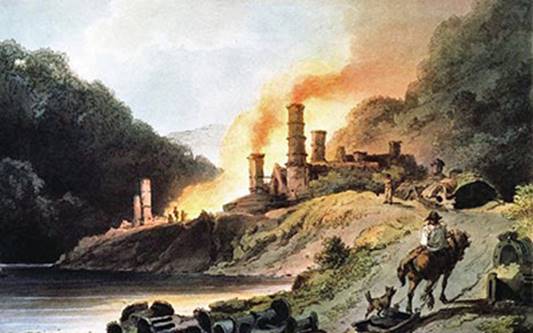
Coalbrookdale
A painting originating from around 1805 shows the Iron Works at Coalbrookdale in happier times, at the heart of the Industrial Revolution
Coalbrookdale is a village in the Ironbridge Gorge in Shropshire, England, containing a settlement of great significance in the history of iron ore smelting. It lies within the civil parish called the Gorge.
This is where iron ore was first smelted by Abraham Darby using easily mined “coking coal”. The coal was drawn from drift mines in the sides of the valley. As it contained far fewer impurities than normal coal, the iron it produced was of a superior quality. Along with many other industrial developments that were going on in other parts of the country, this discovery was a major factor in the growing industrialisation of Britain, which was to become known as the Industrial Revolution. Today, Coalbrookdale is home to the Ironbridge Institute,

Replica of Trevithick’s 1802 Coalbrookdale locomotive at Blists Hill in Shropshire, the birthplace of the
I scrolled briefly through your Website – fascinating – please read all about Garton & King’s involvement with AGA via the link above.
The company – when in the hands of the Holladay family were appointed AGA agents in the very early days – possibly 1932 ?
The successors – Garton King Appliances continue with the Agency to this day though there is no Holladay Family
Involvement – see the rest of the History of Garton & King Ltd and also about me here:-
Aga History
In 1709, the original Coalbrookdale Company was formed by the great iron master, Abraham Darby. Early products included items such as cooking pots and the foundry produced and laid cast iron rails in 1767 becoming the first company to make iron wheels and rails for the railroad industry. However, it is the casting and building of the iron bridge over the River Severn in 1779 which is recognized as the most prominent achievement of the Coalbrookdale Company.
By the mid 1930s another dimension to iron casting was introduced by Francis Darby. Francis had a great love of art and under his guidance, the foundry started to produce ornamental castings including tables and garden furniture as well as larger projects such as the “Hyde Park” gates and railings.
In 1929, the Coalbrookdale Company became a subsidiary of Allied Ironfounders Limited and continued to produce the castings for a wide variety of products including domestic heating and cooking appliances such as the AGA. Today, the foundry continues to manufacture these quality, cast iron cooking instruments.
The Process
The foundry in Coalbrookdale is responsible for producing all the castings for AGA and every product reflects the heritage and traditional craftsmanship that sets AGA apart. The complete process of casting and enameling takes place at two sites – the Coalbrookdale foundry and the AGA factory in Ketley, six miles away.
Casting
The raw materials used at Coalbrookdale are scrap iron and pig iron which are melted down at temperatures of 3,272 DEG F. Before it has a chance to cool down, the molten metal is poured into moulds. The castings are then removed from the molds and left to cool. The castings are then shot blasted and moved to the dressing department where rough edges are removed. The castings are then transported to the AGA-Rayburn site at Ketley where they are then annealed and blasted with iron shot at 72lb a square inch before being filed by hand. This prepares the castings for the enameling process.
Enameling
AGA cookers have a vitreous enamel surface because it is long-lasting, scratch resistant and the color doesn`t fade. Vitreous enamel is a mixture of molten glass, clay and pigment that is permanently bonded onto cast iron at very high temperatures to form a tough, gloss finish. All the colors are produced from metal oxides and the entire enameling process is done by hand. The whole procedure takes three days.
At the start of the enameling process, an undercoat is sprayed onto the castings and the castings are then put into a large oven at 1,445 DEG F for 40 minutes. A further two layers of enamel are then sprayed onto the castings and then fired at 1,427 DEG F. The color is then analyzed by computer and the proportion of pigment for that batch is recorded as part of the serial number. The doors and front panels are then carefully color matched into perfectly matching sets.
1920s
The AGA was invented
in 1922 by the Swedish Nobel Prize-winning physicist, Gustaf Dalen, who had lost his sight in both eyes ten years previously as a result of an experiment which went horribly wrong. While convalescing at home, he applied his grasp of physics to create a cooker for his wife, Elma, that would simplify cooking and be the most efficient cooker possible. It was the world’s first heat storage cooker, and was initially imported into the UK before manufacturing in Britain began in 1929 at the AGA Heat Ltd factory
in Smethwick.
Dalen was awarded the Nobel Prize for Physics in 1912 for an automatic sun valve invention used in buoys and unmanned lighthouses across the world. AGA is an acronym for Dalen’s Swedish
company, Aktiebolegat
Gas Accumulator.

1930s
The 1930s was a progressive decade for AGA. In 1931 a total of 322 AGAs were bought, but just one year later this had risen to a staggering 1,705 – an early sign of the true popularity of a product which has sustained through the generations. ‘The AGA Cook Book’ was first published in the USA in 1934. Written by Sheila Hibben, she described Dalen as “creating a stove that would provide all the conveniences and
economy that modern engineering demands.”
Also in 1934, sixteen members of the Graham Land Expedition Team took an AGA to the Antarctic where, for 3 years, it provided all their cooking needs and kept them warm against the extreme outside temperature of -40 degrees. In the words of expedition leader, John Rymill, “the
AGA remained
quite unperturbed.”



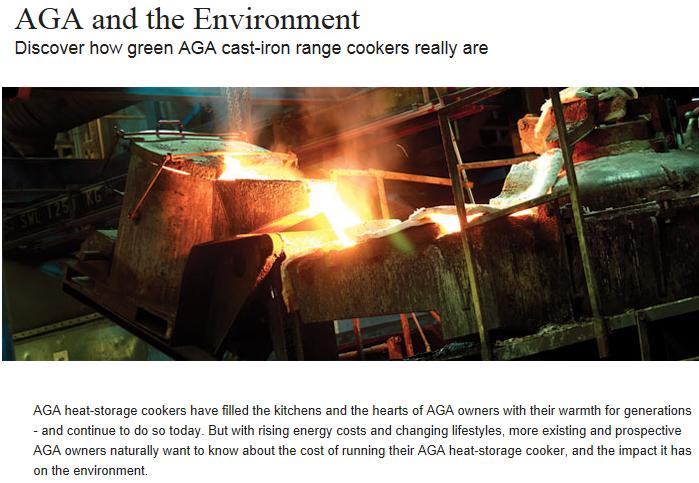
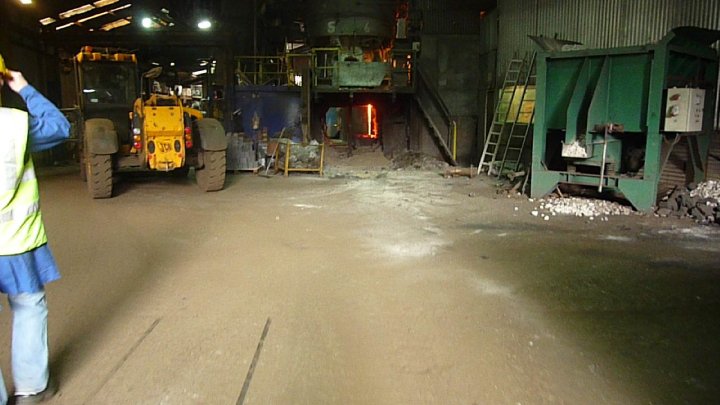
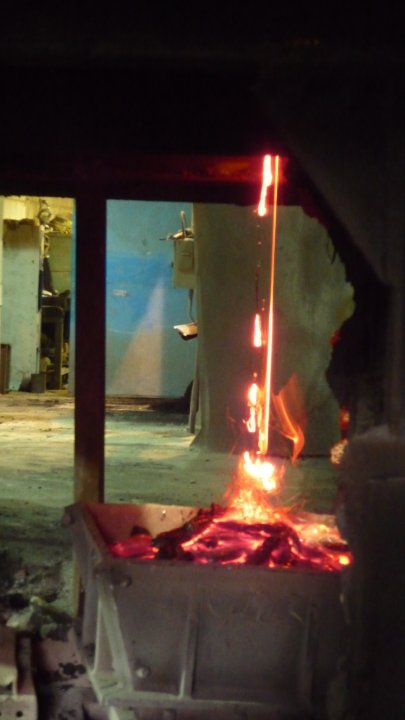

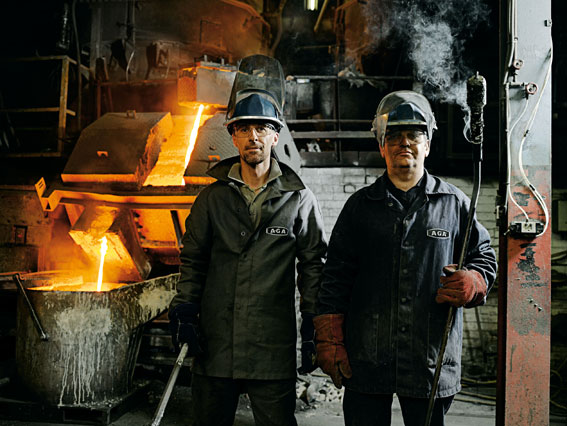
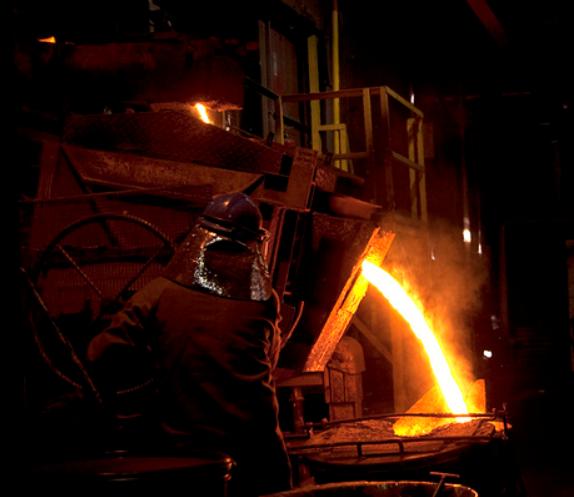

det-aga-ironworks-fireplaceproducts

1922
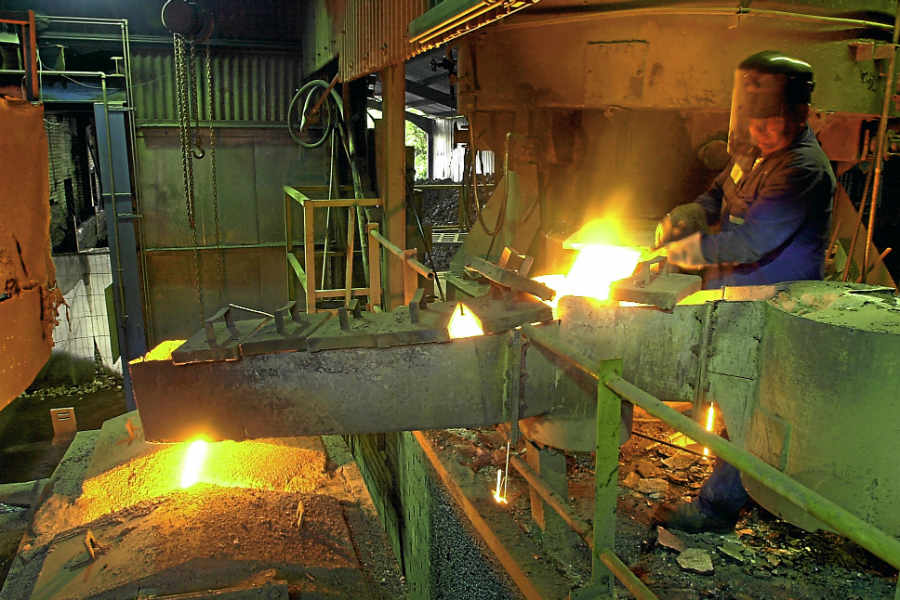
Housing boom boost for AGA

IJzergieterij-AGA
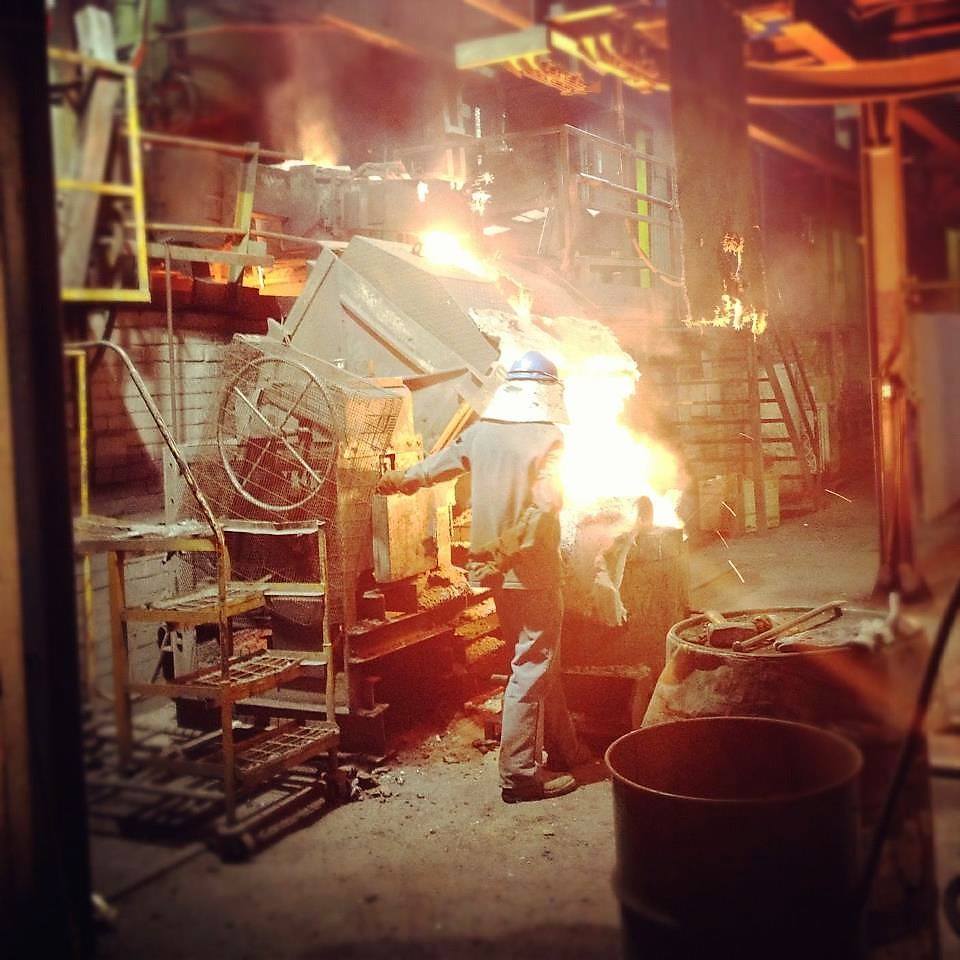

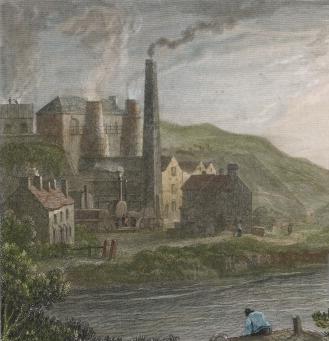
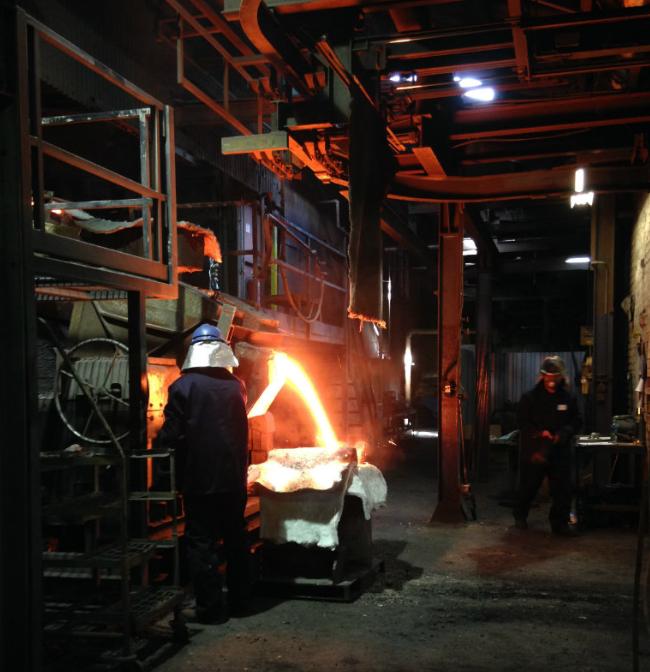
Once the moulds have been filled and cracked, every piece is hand-finished to prepare it for the enameling.
Hulking tools operated by hulking men who shave away the rough surfaces. They’re twisting
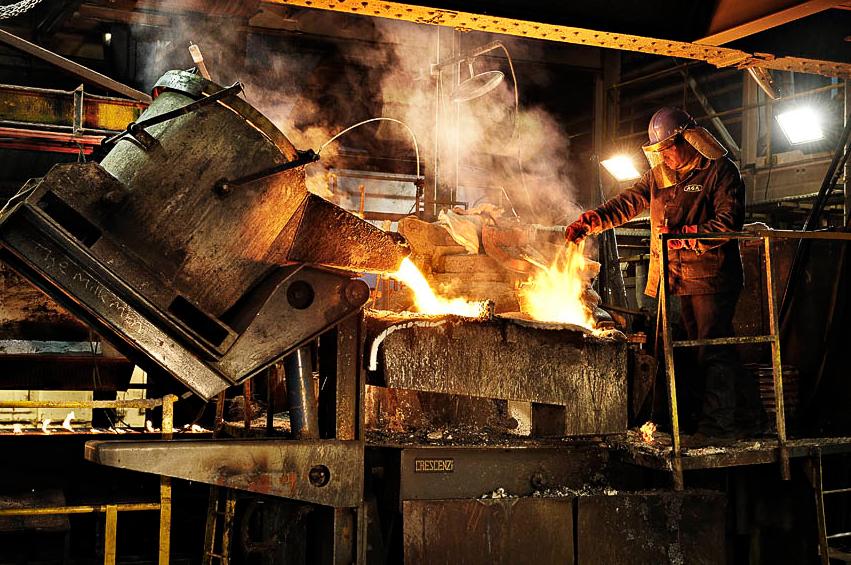
Pouring molten iron into casts at the Aga Foundry at Coalbrookdale, where the Industrial Revolution began
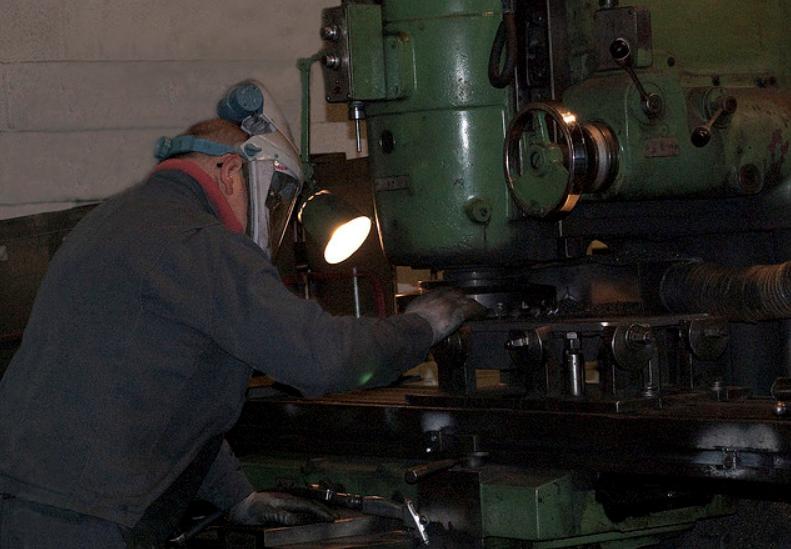

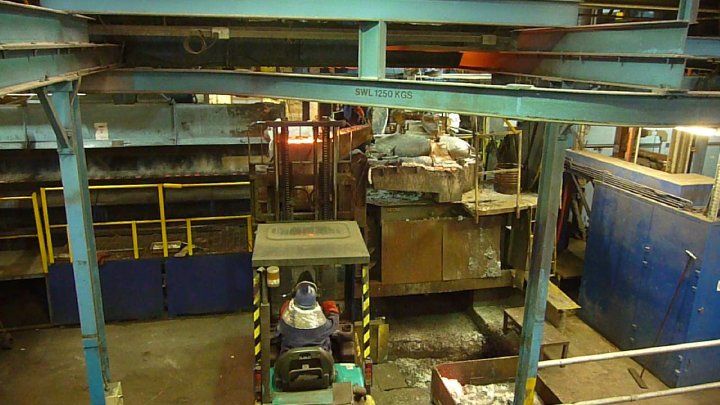
at the Foundry

Inside the Aga plant in Coalbrookdale
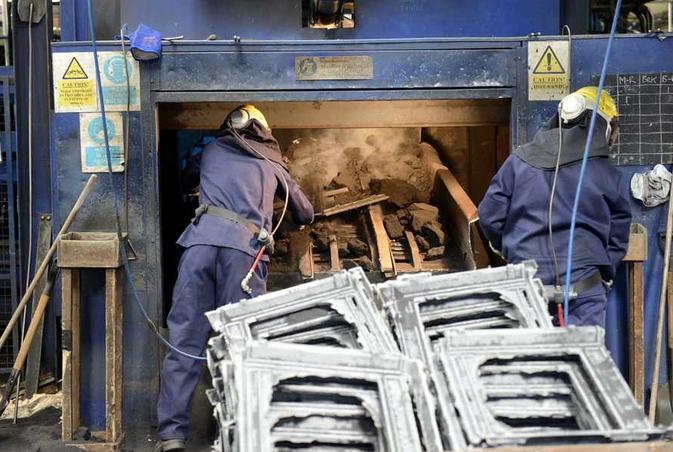
Inside the Aga plant in Coalbrookdale
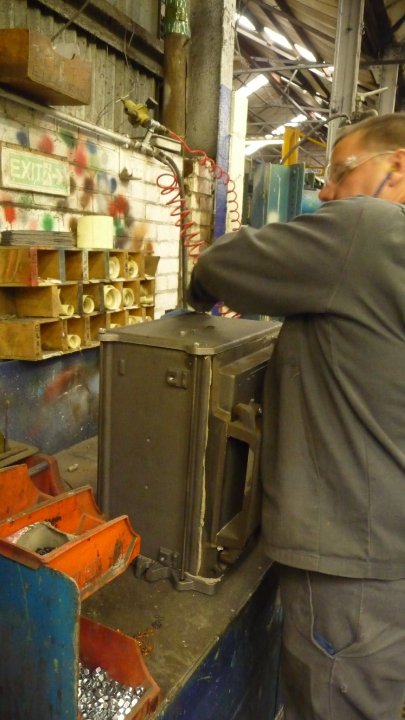
assembling AGA Cooker oven (by hand)

Enameling at the Factory in Telford
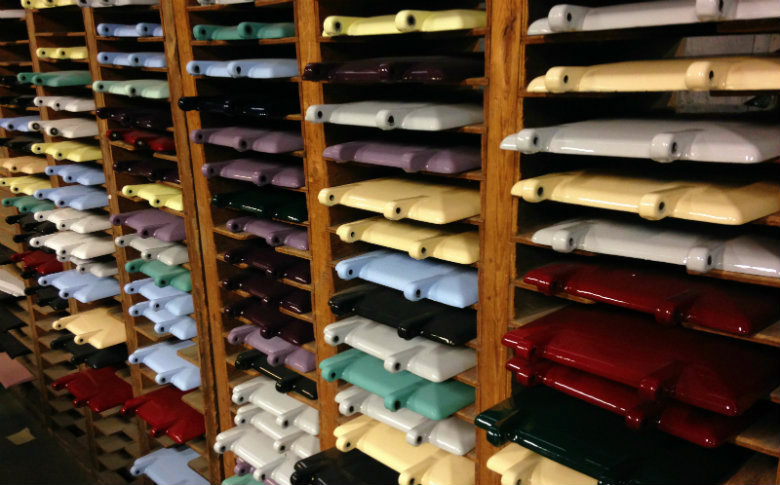

AGA Coalbrookdale
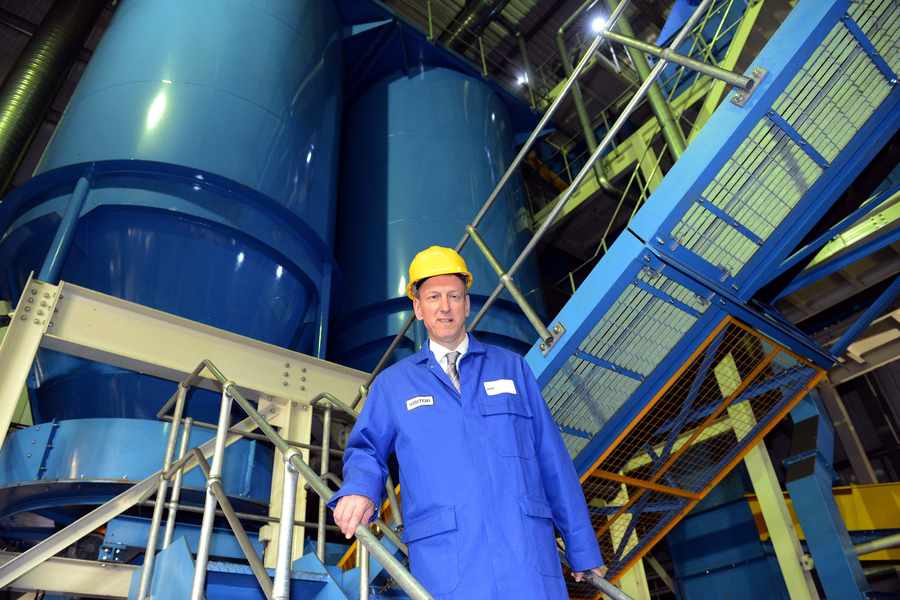
AGA chief executive William McGrath
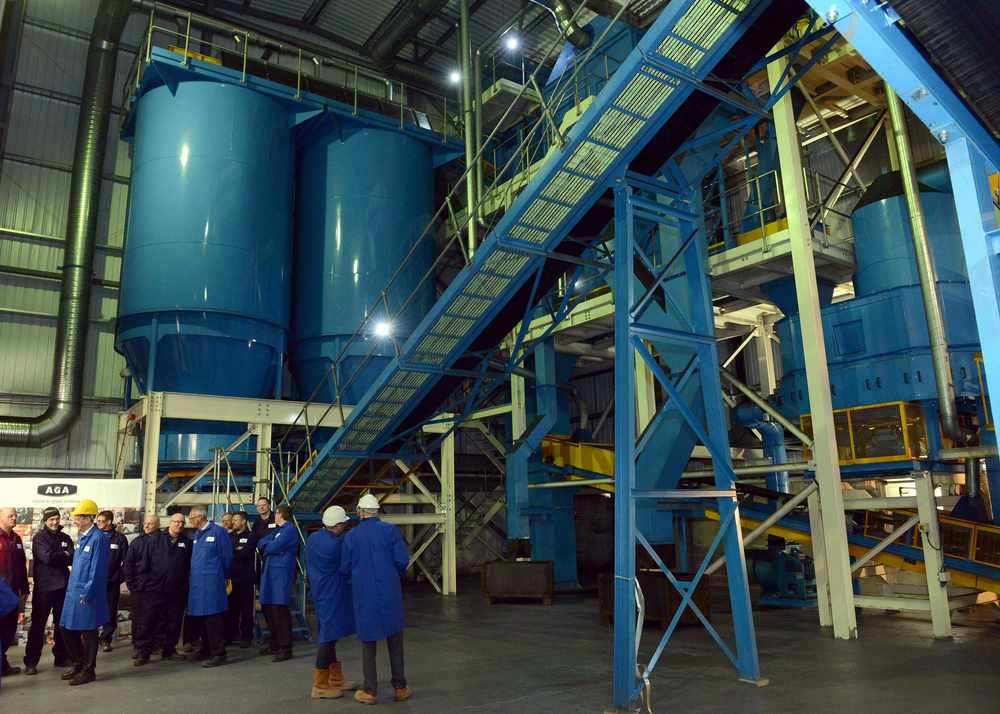
Inside the AGA plant in Coalbrookdale
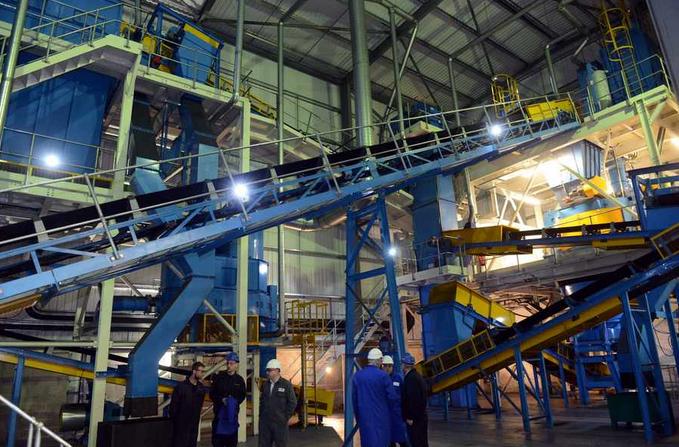
Aga fires up with £4


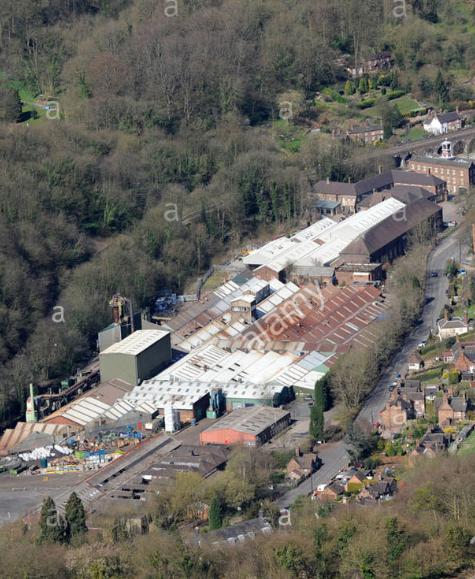
aerial view of Coalbrookdale AGA works in Telford shropshire England

recycled iron
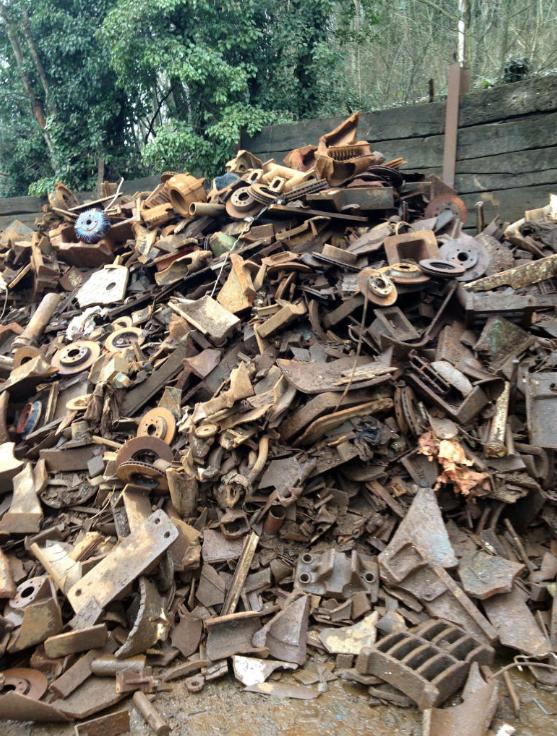
recycled iron
First AGA shop

Garton & King Ltd apparently felt that the AGA was a natural successor to the Victorian Range though there was a distinct void between the demise of the Range and the arrival of the AGA. G & K were not quite the first in the U.K. to handle AGAs, this distinction seems pretty certain to belong to BLADES of Oxted, Surrey who continue to this day with the AGA Agency.

AGA on the fair

AGA on the fair
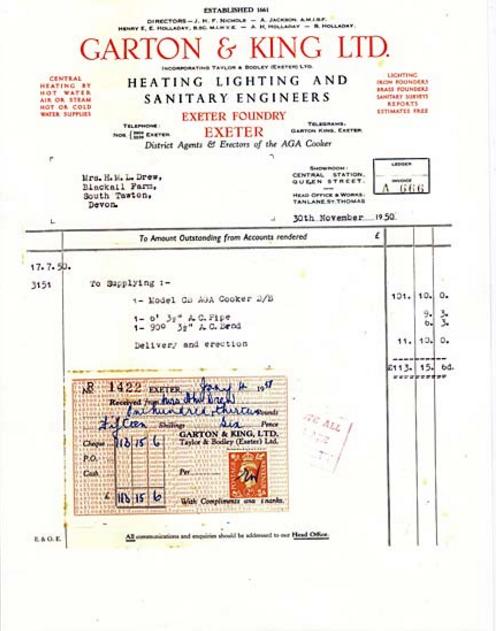
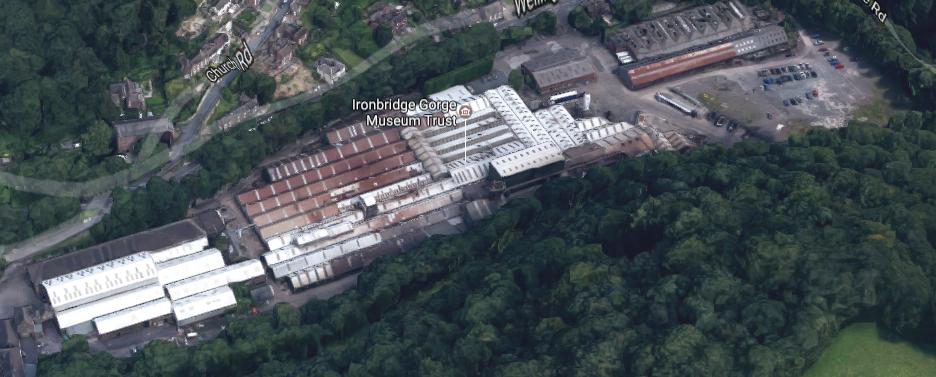
AGA Coalbrookdale
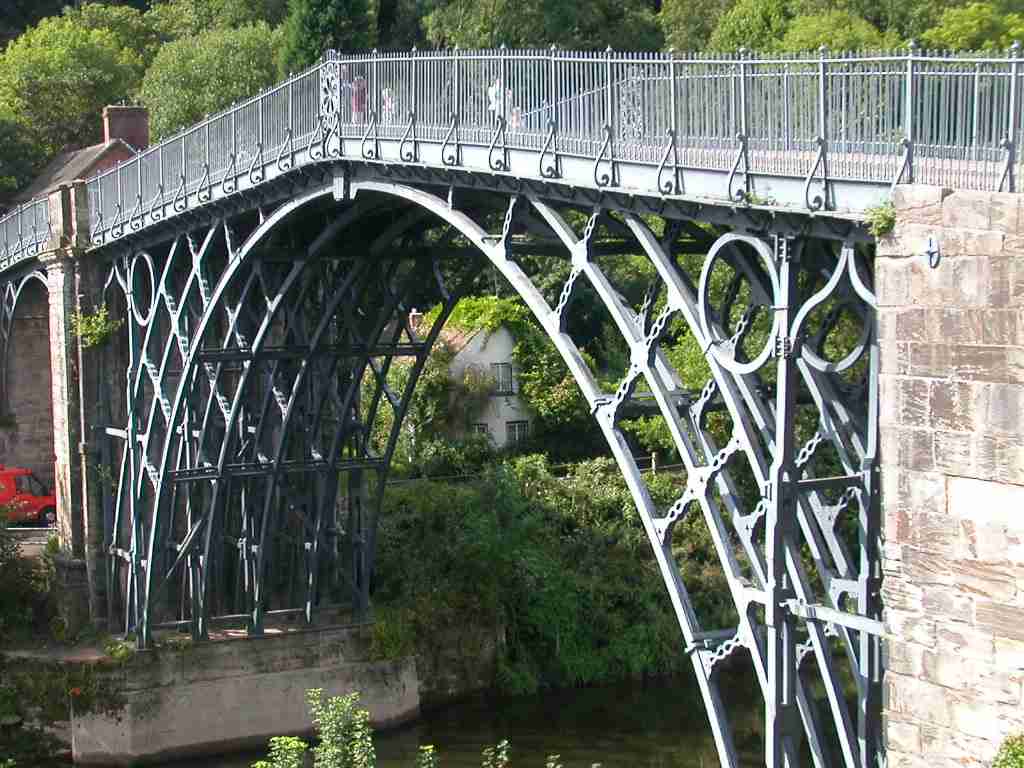
Ironbridge
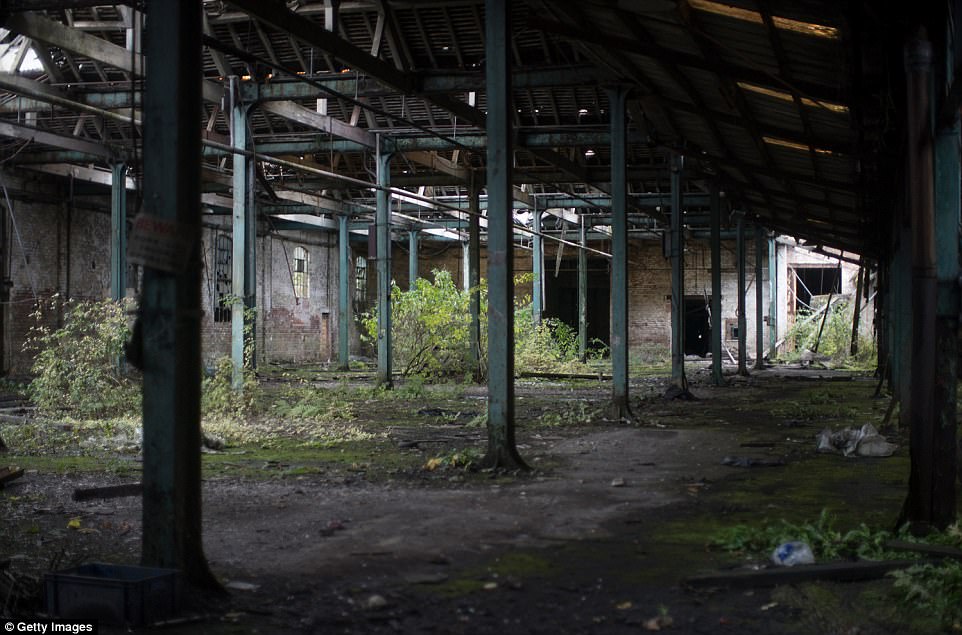
![]()
The end of the Aga saga; Foundry making the iconic cookers in village once known as The Birthplace Of Industry closes its doors on 300 years of history.


Aga fires up with £4.5 million investment at Telford plant
A multi-million pound investment in Aga’s Telford foundry is set to secure the future of the historic site.
The job losses will affect the company’s factory and offices in Ketley, and its historic foundry in Coalbrookdale.
The company was taken over by US giant Middleby Corp in a £129 million deal last year.
Today’s announcement comes after nearly 70 jobs were lost across the two sites in December.
Aga Rangemaster today said further cuts were needed.
Last month it was revealed that sales fell by around 6.9 per cent last year, as sales of cookers slowed down, and the latest announcement suggests there has been no let-up in 2016.
An Aga spokesman said: “Aga Rangemaster Ltd is implementing a number of organisational changes that impact its Aga operation at Telford.
“These changes are linked to current market conditions. Unfortunately the impact of these changes is that the company has placed the roles of 63 employees at risk of redundancy.
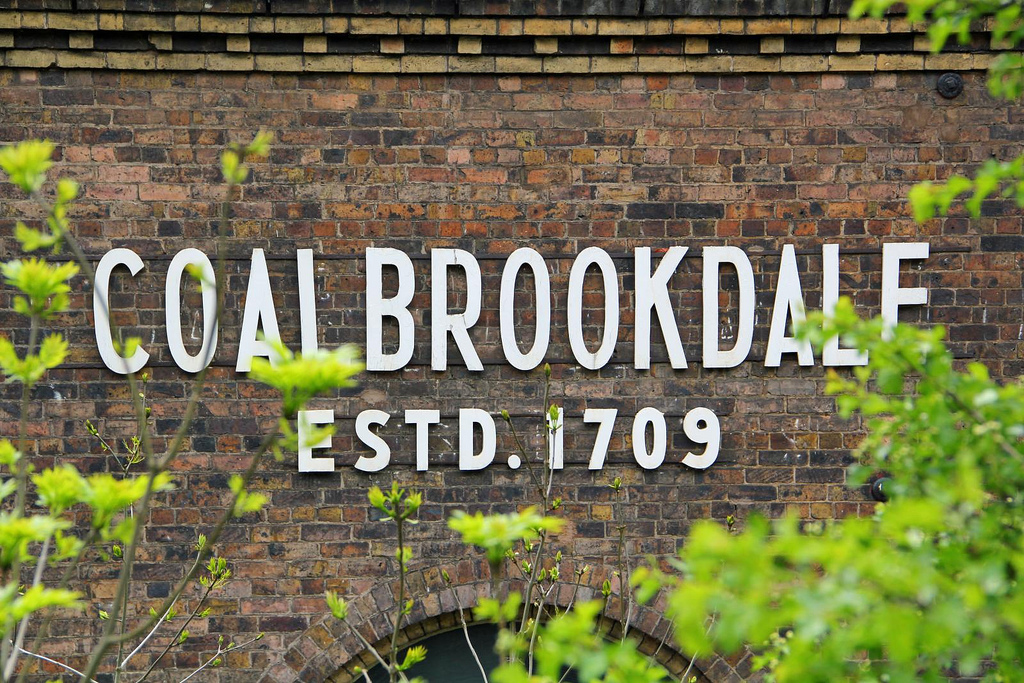

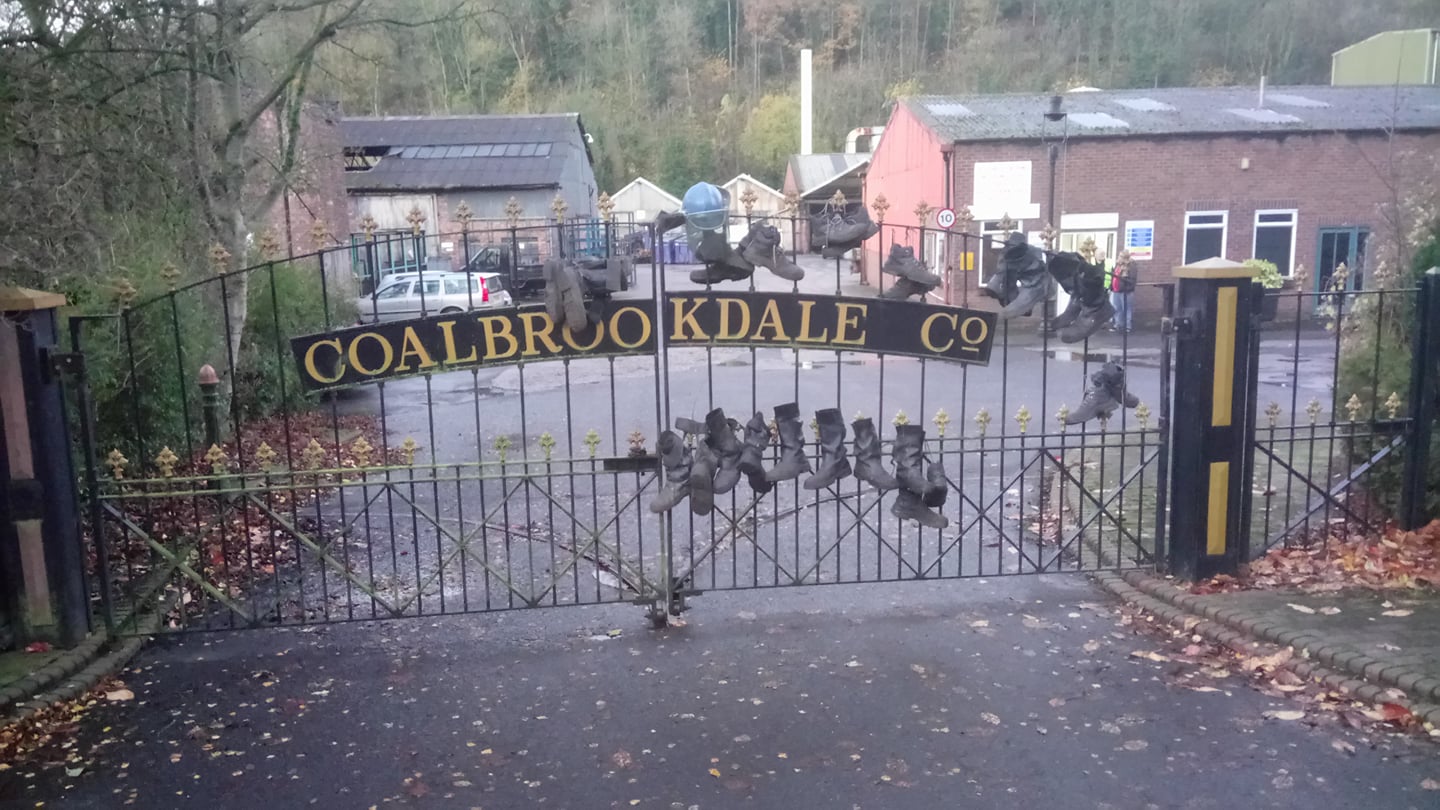
That’s all folks, there sending us home early , in Telford

That’s all folks, there sending us home early , in Telford
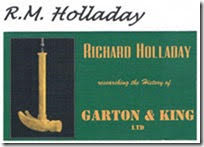 LINK
LINK AGA plant in Coalbrookdale
AGA plant in Coalbrookdale